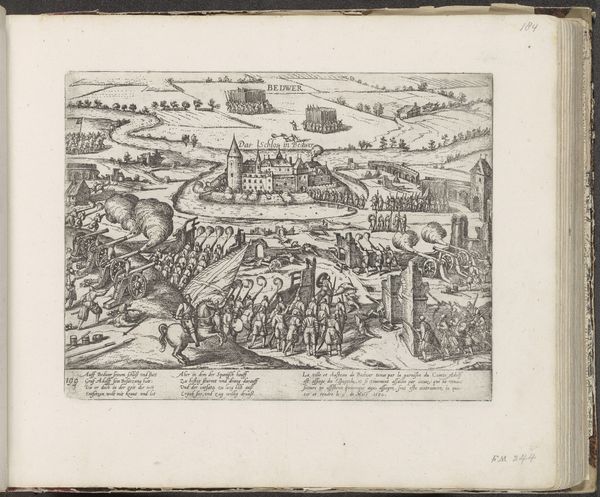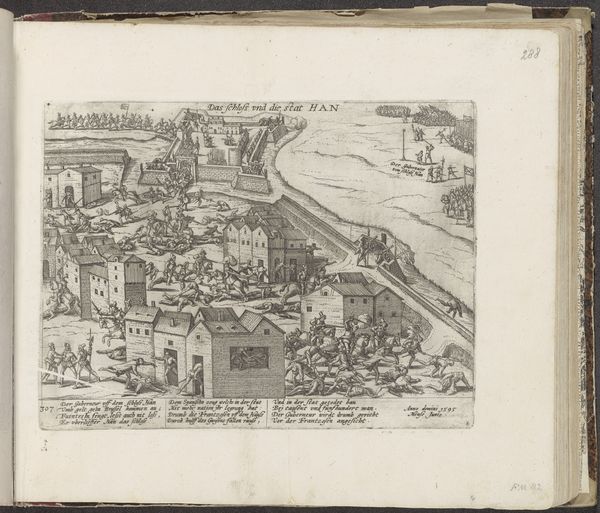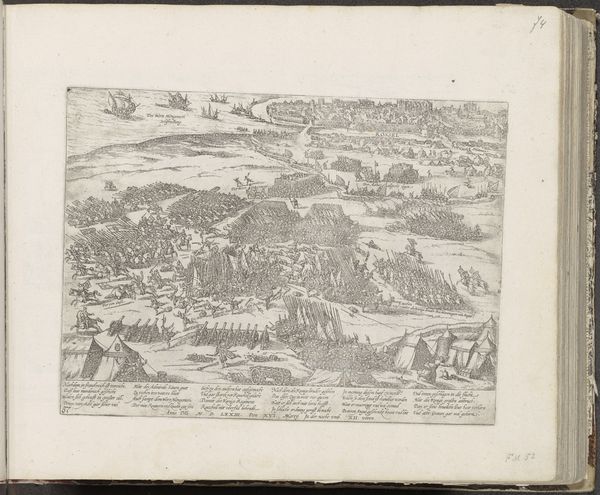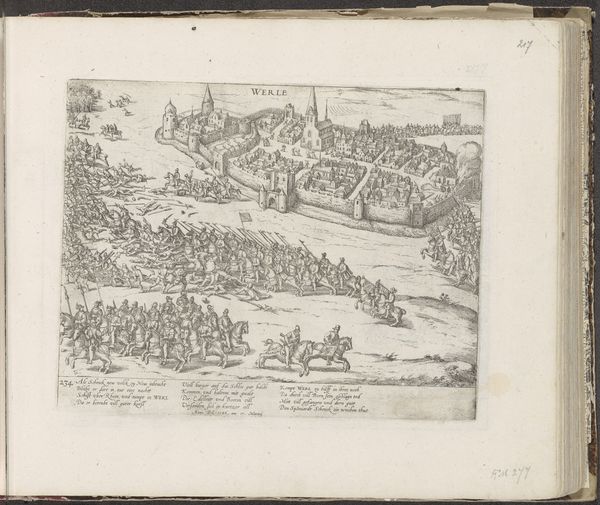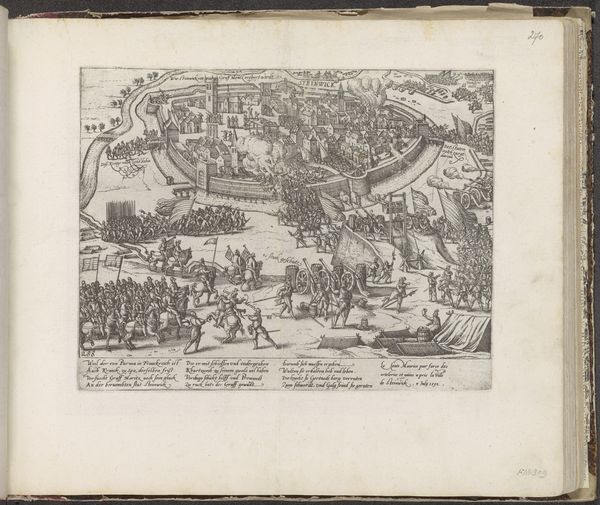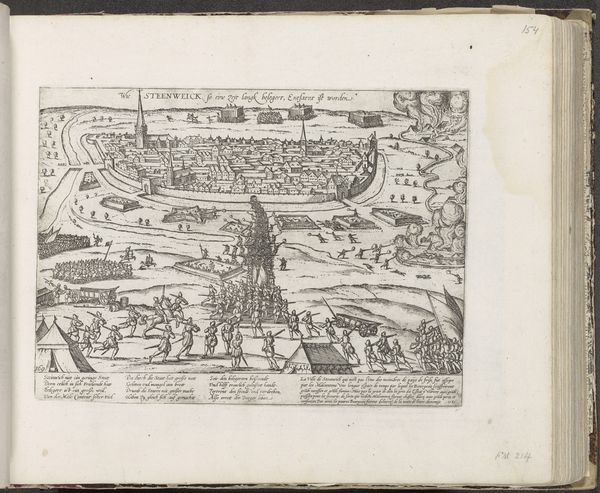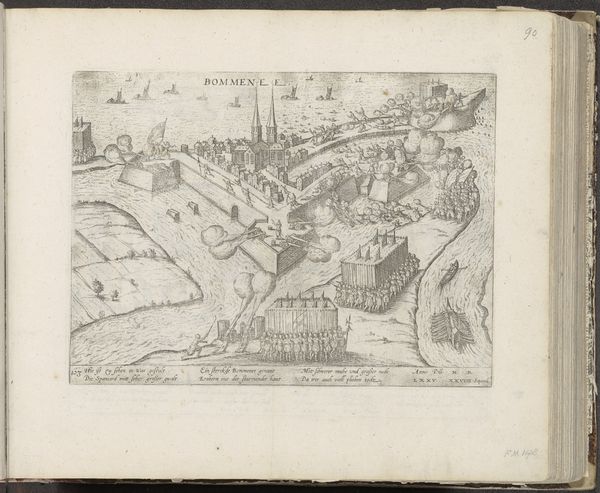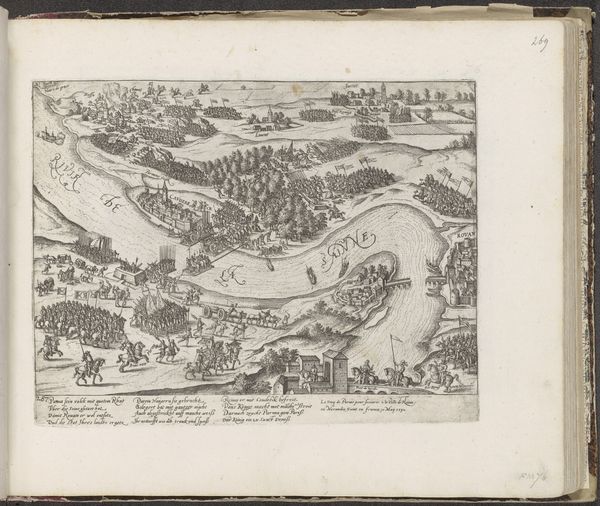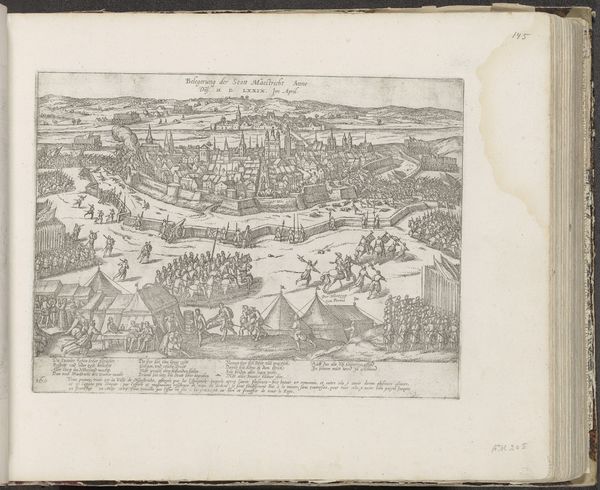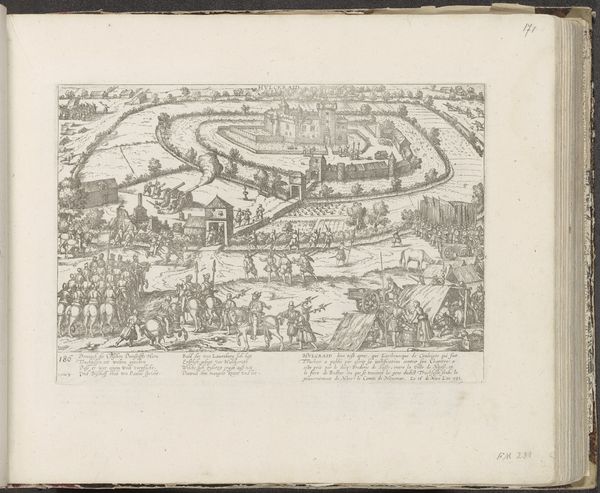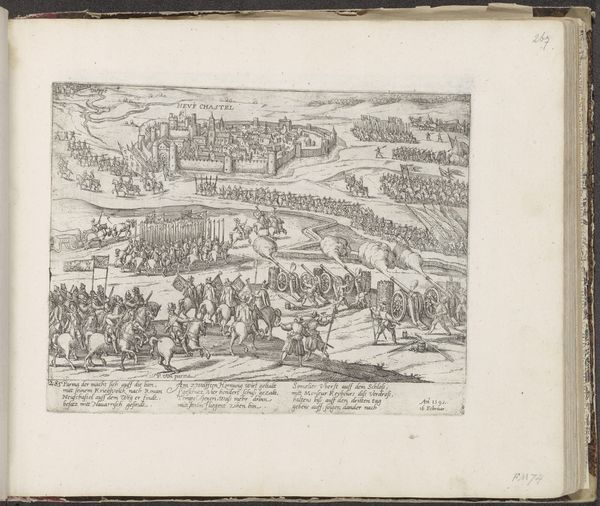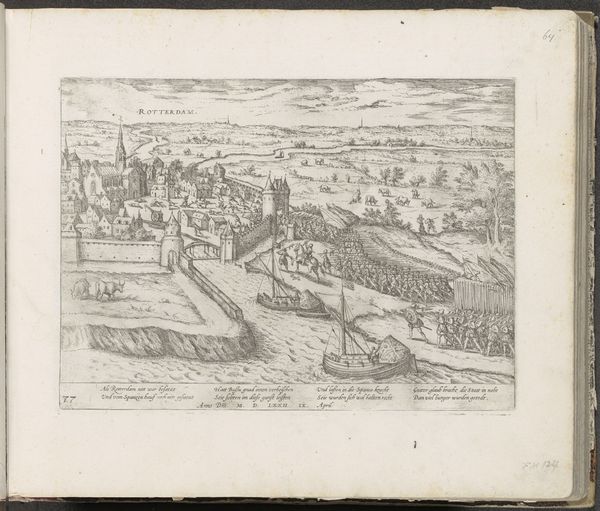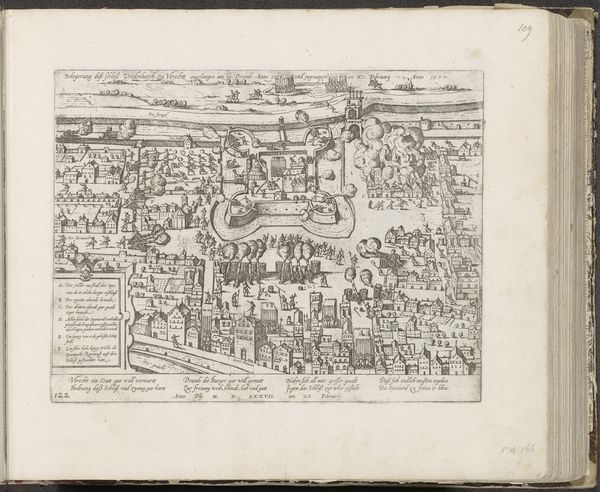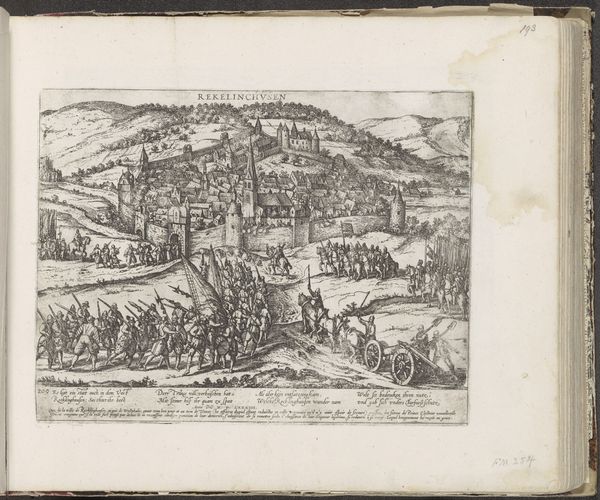
drawing, print, etching, engraving
#
drawing
#
aged paper
#
toned paper
#
medieval
# print
#
pen sketch
#
etching
#
sketch book
#
landscape
#
personal sketchbook
#
pen-ink sketch
#
pen and pencil
#
pen work
#
sketchbook drawing
#
history-painting
#
northern-renaissance
#
sketchbook art
#
engraving
Dimensions: height 220 mm, width 292 mm
Copyright: Rijks Museum: Open Domain
Curator: Today, we’re examining "Inname van Gran door de Christenen, 1595," an etching and engraving executed sometime between 1595 and 1597 by Frans Hogenberg, currently held in the Rijksmuseum. What's your immediate take? Editor: The first thing that strikes me is the sheer density of figures and lines. It’s chaotic, almost overwhelming, like a swarm frozen in a single moment. The texture feels harsh, gritty. What does the composition tell you? Curator: Formally, there's a fascinating attempt at perspective, albeit somewhat flattened. The composition leads the eye from the lower foreground, teeming with soldiers, back towards the besieged city, emphasizing the strategic positioning of the forces. I am drawn to the artist's management of pictorial space given the complexity. Editor: But the subject matter is deeply troubling. It’s a celebratory depiction of conquest, erasing the human cost of the siege. What of the Ottoman defenders, the civilians within the city walls? Their story is completely absent here. It reveals the pervasive biases inherent in early modern European depictions of military campaigns. How do we reconcile its aesthetic value with the politics embedded within the work? Curator: The dense arrangement contributes to a narrative clarity typical of the Northern Renaissance style. Hogenberg skillfully balances detailed realism with symbolic representation to convey the complexities of siege warfare and strategic urban spaces. This work is, after all, meant to function didactically. Editor: And didactically it promotes a one-sided account. It reflects the religious and cultural conflicts of the time, framing the conflict as a victory for Christianity. Hogenberg’s image contributes to a legacy of misrepresentation. Curator: Undoubtedly, yet analyzing it from a formal perspective offers invaluable insight into the artist's process, technique, and the artistic conventions shaping how conflicts were perceived. It displays incredible mastery. Editor: True. As with any historical artwork, its analysis forces us to examine not only its aesthetic merits but also the broader cultural and political forces shaping both its creation and reception, thus acknowledging its silences and challenging the dominant narratives. Curator: Precisely. Through this etching we not only glimpse the artistry of Hogenberg, but are equally reminded of the biases inherent in its representation.
Comments
No comments
Be the first to comment and join the conversation on the ultimate creative platform.
